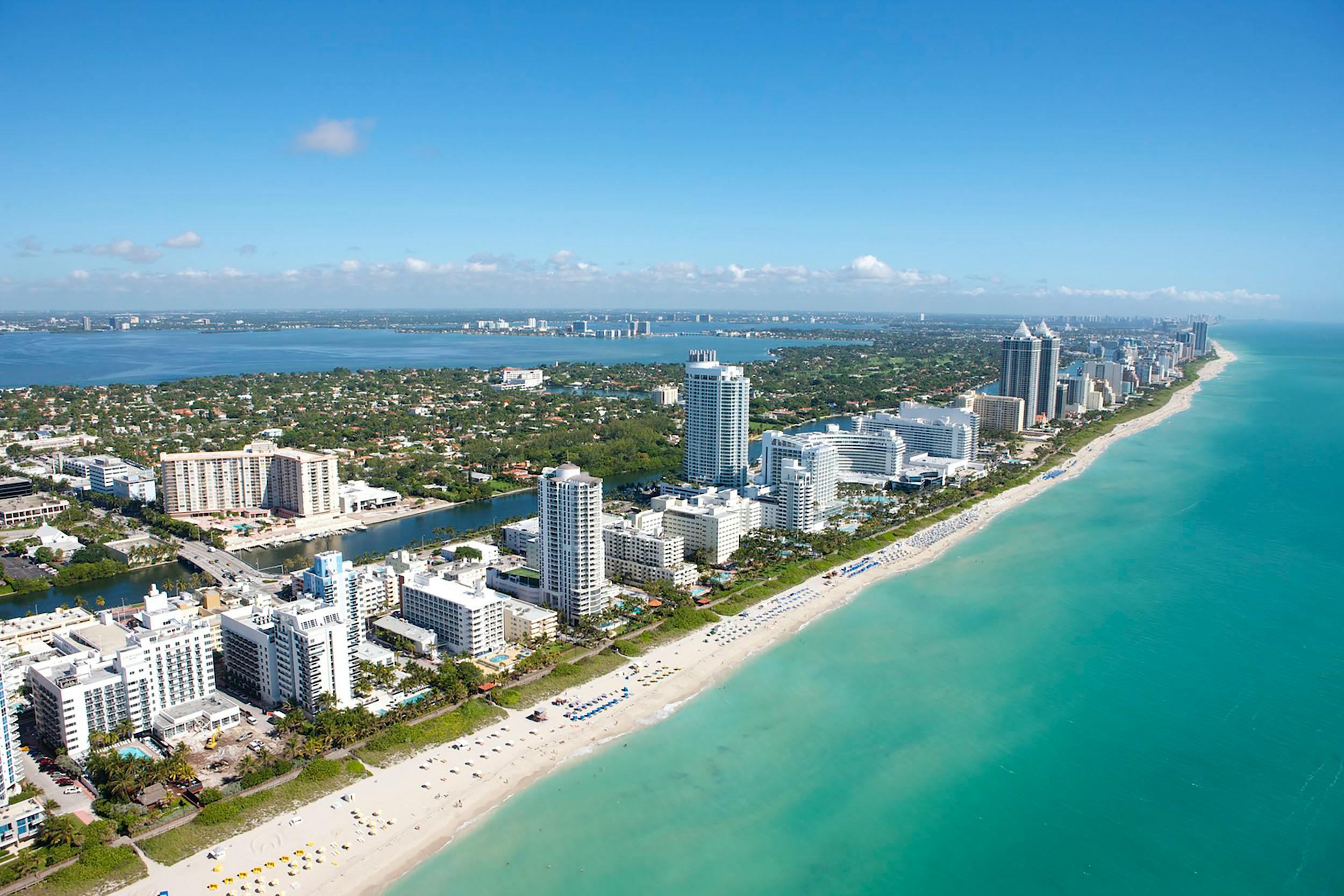Helen Green visits Frieze London

From Fifth to Collins Avenue: Inside the Billionaire Shift to Miami
November 7, 2025
For decades, the gravitational pull of wealth in America pointed north — to the marble lobbies of Manhattan, the discreet brownstones of the Upper East Side, the boardrooms overlooking Central Park. Yet in recent years, a new axis of affluence has emerged further south.
Miami, once dismissed as a place to party, is now where many of the world’s ultra-high-net-worth individuals are choosing to live, invest, and design their lives. The party may still be happening, but it’s no longer the main event — it’s the backdrop to a far more sophisticated migration of capital, culture, and creativity.

What began as a pandemic-era escape has solidified into something structural. The appeal of Miami runs deeper than sunshine and sea views. It’s the combination of a tax-friendly regime, a global gateway location, and an increasingly polished cultural offering.
Florida’s lack of state income tax remains an undeniable magnet, but what’s truly changed is the city’s identity. Miami today is not a seasonal refuge — it’s a financial hub with architectural ambition, a creative pulse, and a sense of freedom that many high-tax states have quietly lost.
The new Miami is cosmopolitan and confident. Art Basel brought the collectors, but tech and finance brought the permanence. Hedge-fund founders and entrepreneurs who once measured success by their Manhattan square footage now speak of Biscayne Bay views and private marinas. Luxury brands have followed them — so have Michelin-starred chefs, international galleries, and world-class schools.
The city that once lived off tourism is now curating an entirely new definition of luxury: one where sun, liquidity, and lifestyle converge.
The ultra-wealthy have always moved in waves, reshaping cities in their image. In the early twentieth century, New York’s gilded families spent summers in Newport and winters in Palm Beach. By the mid-century, the jet-set expanded their playgrounds to Paris, London, and Monte Carlo. Later came the global citizens, carving out lives across continents — a penthouse in Hong Kong, a villa in Tuscany, a townhouse in Belgravia.
The ultra-wealthy have always moved in waves, reshaping cities in their image. In the early twentieth century, New York’s gilded families spent summers in Newport and winters in Palm Beach. By the mid-century, the jet-set expanded their playgrounds to Paris, London, and Monte Carlo. Later came the global citizens, carving out lives across continents — a penthouse in Hong Kong, a villa in Tuscany, a townhouse in Belgravia.
What’s different now is not the movement itself, but the degree of permanence. The post-pandemic elite no longer migrate seasonally; they relocate strategically. They are citizens of capital, choosing jurisdictions as carefully as they choose schools for their children.
In that context, Miami feels inevitable. It offers the American legal system without the American bureaucracy, the safety of U.S. regulation with a touch of tropical liberation.

Miami’s architecture is evolving at an astonishing pace. Starchitects are sculpting glass towers that rise like sculptures from the waterfront, while boutique developers commission interiors from names that once only graced Milan or Mayfair. The skyline reads like a catalogue of ambition — each project more curatorial, more experiential than the last.
Beneath this architectural race lies a deeper transformation: Miami is becoming a laboratory for the future of luxury living.
For designers and developers, this shift is electrifying. The clients arriving in Miami are not merely looking for property — they are looking for identity. They want homes that reflect global taste but express local soul; spaces that feel bespoke yet effortlessly functional.
The design language is evolving accordingly: organic materials, natural light, and fluid transitions between indoors and outdoors. The Miami aesthetic is becoming more refined — still sensual, but grounded in craftsmanship rather than ostentation.
For those in the design industry, this signals opportunity on an extraordinary scale. The city’s luxury ecosystem — architecture, interiors, landscaping, art consulting, private client services — is expanding in unison, redefining what “American luxury” looks and feels like.
But what of New York? Has the empire truly shifted?
The answer, as always, is more nuanced. New York remains the intellectual and cultural capital of the United States, and the global prestige of a Park Avenue address still commands reverence. The Manhattan luxury market, far from collapsing, has shown remarkable resilience; foreign buyers have returned, and trophy assets continue to trade at record values.
Yet the psychological monopoly is broken. For the first time, ultra-wealthy individuals have an equally credible alternative on U.S. soil. The migration to Miami won’t sink New York’s property values, but it will change the tempo.
The city that never sleeps is learning to share the spotlight.

For the design and development world, this movement is both challenge and muse. The expectations of these clients are unlike any before. They want spaces that perform like resorts, flow like galleries, and age like heirlooms. They want meaning behind the marble. And they are willing to pay for it.
As Miami matures, the opportunity for creative practitioners is extraordinary: to define a new visual language for luxury in the twenty-first century — one that feels lighter, slower, and somehow more human.
Whether this wave will last is impossible to know. Perhaps, in another decade, the pendulum will swing again — to Austin, to Dubai, or to some as-yet-unimagined destination where freedom and fortune intersect.
But for now, the sun-soaked city of Miami stands as the symbol of a new kind of affluence: mobile, creative, and beautifully unmoored.
The party has moved south — and this time, it’s here to stay.
Written by Alexandra Jurkiewicz
or use the form below;